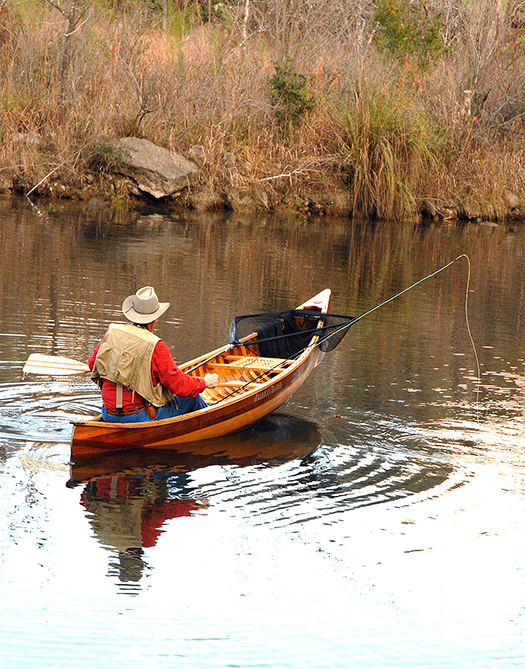
PADDLING CANOES OR KAYAKS not only causes minimum disturbances to the fish or stream bank wildlife, it also frees the paddler from stress. One can almost feel somewhat like Native Americans did as their canoe glided silently on the water between paddle strokes. (Photo by John Jefferson)
by John Jefferson
I heard from Grahame Jones, last week. He recently retired from Texas Parks and Wildlife Department as director of the TPWD’s Law Enforcement Division.
An East Texan by birth, soon after retirement, Jones opened a fishing guide business. He specializes in all Central Texas lakes and streams, but has fished the bays, as well. He is also executive director of the Texas Conservation Alliance.
He certainly qualifies as a conservationist after a distinguished career with Texas’ largest and most important conservation agency.
In another life, I was once asked hostilely if I was an “environmentalist.” I had to stop and think. That term often includes the word “radical” in usage. And that’s often improper.
I quickly but politely replied. “We all oughtta be.”
Grahame quoted an author – the late Richard Donovan – who wrote that being called an environmentalist didn’t bother him; but being called a “radical environmentalist” did. He said radical environmentalists destroy wildlife habitat (and property), poison water, and do radical things. I appreciate that distinction.
I also appreciate the late Mr. Donovan for his book, “Paddling the Wild Neches.” It was similar to John Graves classic book, “Goodbye to a River.” Graves canoe trip was a protest about proposed dams along the Brazos. Mr. Donovan’s quest was to show the threat to the tranquility and raw beauty of the upper Neches as it flows through the Pineywoods under dam construction threats, too. He canoed over two hundred miles of the Neches River.
I have never been on the Neches but grew up ten-plus miles from it and pleaded with my mother for permission to ride my bike to the river to fish. Permission denied. I was about twelve and a series of islands and sand bars were visible from the Highway 90 Bridge – just begging for a kid to come and fish. Apparently, the area had a reputation, and it wasn’t about its fishing.
Fast forward to maturity (sorta). I fell among young Austin professionals who canoed Hill Country streams and the Rio Grande. The group introduced me to another type of boating that was devoid of noisy motorboats and relatively pristine. Most stream banks were sparsely populated and except for beverage cans thoughtlessly left behind by overturned tubers, they were somewhat litter-free.
It renewed my appreciation for the quiet and peace along Beech Creek west of Silsbee where a friend of my grandfather’s took me to fish at the edge of the Thicket and learn the ways of the woods.
After the big war, we visited my father’s grave in Beaumont. The cemetery overlooked Pine Island Bayou. While my mother tended the gravesite, I’d go down to the water. Everything was still. Except for an occasional fish jumping. Someone said they were mullets.
Reading “Paddling the Wild Neches,” I thought of the solitude along the bayou. Much of the upper Neches must be like that.
If you can’t canoe the river, read the book. Except for the threat of dams, you’ll feel the peace of the water.
JJ




